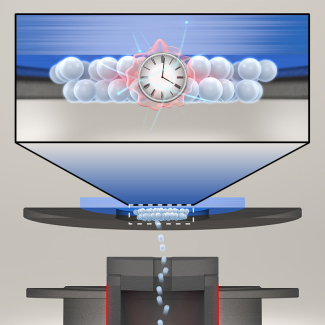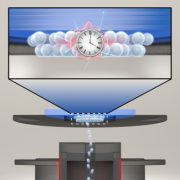日本語で読みたい方は、 google chromeで開き、
画面上で右クリックをして、「日本語に翻訳」をクリックしてください

A schematic of the deposition process, as thorium ions
get vaporized then deposited in a thin film on the substrate’s surface.
Image Credit Steven Burrows/Ye group
In the quest for ultra-precise timekeeping, scientists have turned to nuclear clocks. Unlike optical atomic clocks—which rely on electronic transitions—nuclear clocks utilize the energy transitions in the atom’s nucleus, which are less affected by outside forces, meaning this type of clock could potentially keep time more accurately than any previously existing technology.
However, building such a clock has posed major challenges—thorium-229, one of the isotopes used in nuclear clocks, is rare, radioactive, and extremely costly to acquire in the substantial quantities required for this purpose.
この情報へのアクセスはメンバーに限定されています。ログインしてください。メンバー登録は下記リンクをクリックしてください。

